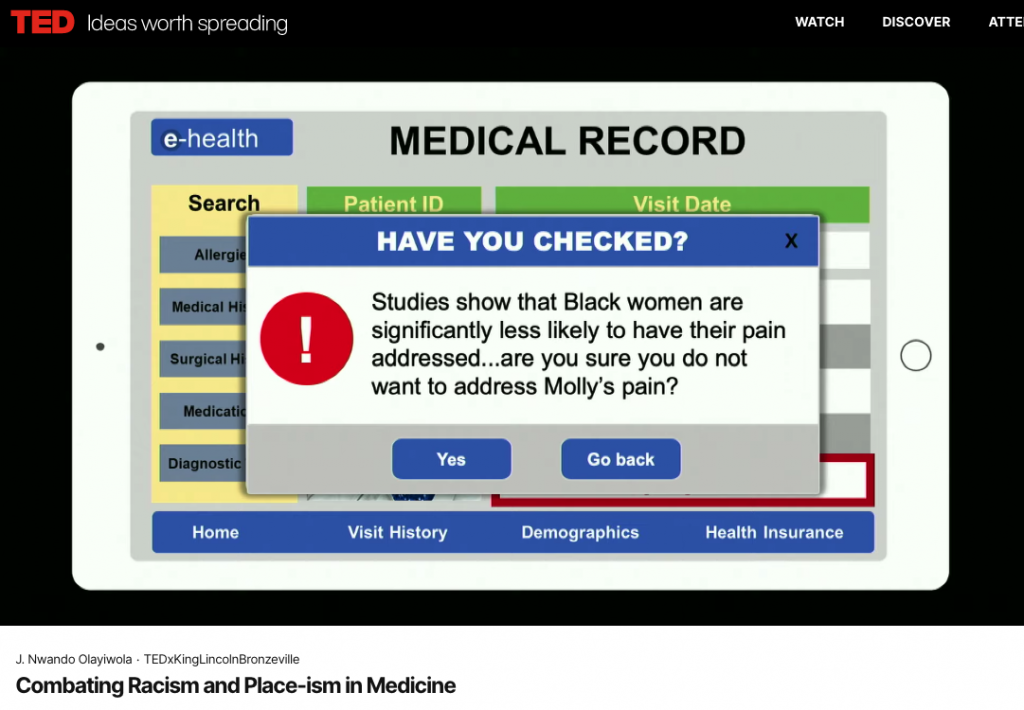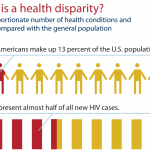What can content strategists do to address racism and place-ism in healthcare?
In J. Nwando Olayiwola’s TEDx talk Combating Racism and Place-ism in Medicine, she speaks to the serious problem of racism in medicine. Racism leads to higher mortality rates and poorer care for black men and women. For example, health professionals assume black patients have a higher pain tolerance, so they don’t take their pain as seriously. Doctors are less likely to offer black people certain screenings.
As with many areas of racism, this is due partly to unconscious bias. We can only combat it with conscious anti-racism.
How to address racism in healthcare
J. Nwando Olayiwola speaks directly to patients, institutions, and doctors in her talk. She tells all three how to address racism and place-ism:
- Patients: be empowered to address this with your doctors.
- Institutions: retrain your health professionals.
- Doctors: honor your oath to do no harm.
This got me thinking. Many of Olayiwola’s examples are about communication. So what can content strategists do to combat racism?
Content strategy for anti-racism
In one example, Olayiwola suggested an EHR pop-up to call out unconscious bias to doctors. This sort of pop-up is often called a “just in time” reminder. While there are issues with too many pop-ups in EHRs, it’s the right idea. Content strategy best practices like “just in time” reminders can do a lot to combat bias and racism.

For example:
- Work with the subject matter experts who create validated screeners to update out-of-date assumptions and bias.
- Learn where the current system overlooks BIPOC patients. (And speak up!!) For example, did you know that Black men are often not screened for depression?
- Listen to BIPOC content strategists. There are a lot of white faces in the crowd, but we have a lot to learn.
- Build your strategy around stress cases, not edge cases.
Content strategy connects information to people – and when it comes to racism and bias, there is a lot we can do. Content strategy can address racism in healthcare. In fact, we have to.


